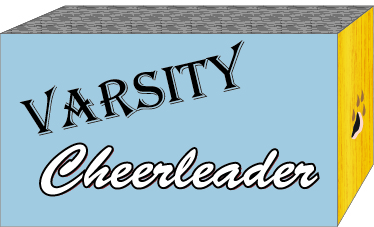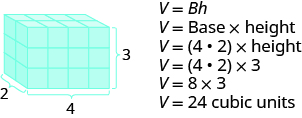| << Chapter < Page | Chapter >> Page > |
Before you get started, take this readiness quiz.
In this section, we will finish our study of geometry applications. We find the volume and surface area of some three-dimensional figures. Since we will be solving applications, we will once again show our Problem-Solving Strategy for Geometry Applications.
A cheerleading coach is having the squad paint wooden crates with the school colors to stand on at the games. (See [link] ). The amount of paint needed to cover the outside of each box is the surface area , a square measure of the total area of all the sides. The amount of space inside the crate is the volume, a cubic measure.

Each crate is in the shape of a rectangular solid . Its dimensions are the length, width, and height. The rectangular solid shown in [link] has length units, width units, and height units. Can you tell how many cubic units there are altogether? Let’s look layer by layer.

Altogether there are cubic units. Notice that is the

The volume, of any rectangular solid is the product of the length, width, and height.
We could also write the formula for volume of a rectangular solid in terms of the area of the base. The area of the base, is equal to
We can substitute for in the volume formula to get another form of the volume formula.

We now have another version of the volume formula for rectangular solids. Let’s see how this works with the rectangular solid we started with. See [link] .

To find the surface area of a rectangular solid, think about finding the area of each of its faces. How many faces does the rectangular solid above have? You can see three of them.

Notification Switch
Would you like to follow the 'Prealgebra' conversation and receive update notifications?